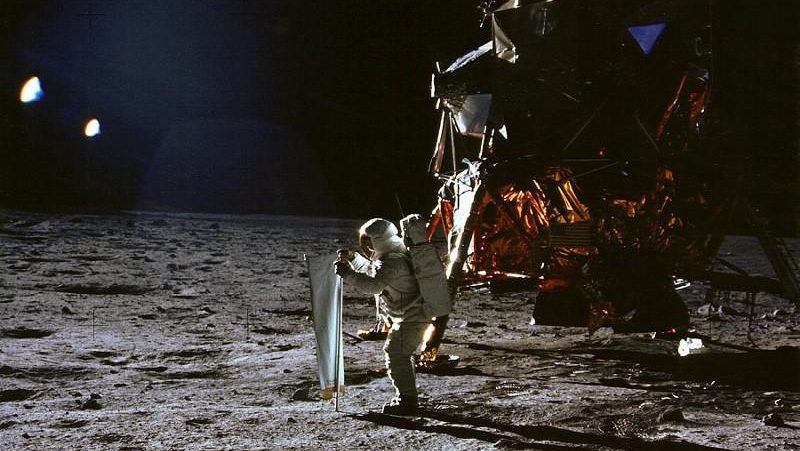Albert Einstein spent the last 30 years of his life pursuing a “theory of everything,” aiming to find a concise equation summarizing the fundamental laws of the Universe. His downfall? Subatomic particles.
Physicist Michio Kaku offers an alternative to Einstein’s elusive theory: “string theory.” We could try to explain it, but he does a much better job. After all, he’s one of the co-inventors of it.
Suppose you aren’t sold on string theory. In that case, Kaku breaks down the three criteria needed to determine what makes our Universe tick: it must incorporate Einstein’s theory of gravity, explain particle physics, and be mathematically sound. No pressure.
MICHIO KAKU: Albert Einstein spent the last 30 years of his life chasing after a 'theory of everything,' an equation, perhaps no more than one-inch long, that would allow us to summarize all the great laws of the Universe. In other words, to quote, "Read the mind of God." And he failed. He failed because, well, the Universe is much more complex than Einstein thought. We have all these subatomic particles now. How are we gonna make sense out of the vast diversity of matter we see around us? The theory of everything has to be fantastic, it has to be incredible, it has to be crazy!
Why does it have to be crazy? 'Cause all the easy stuff was shown to be inconsistent mathematically or physically - and that's where 'string theory' comes in, 'cause string theory is crazy. So string theory is based on music. All these subatomic particles are nothing but musical notes on a tiny vibrating string. So this would be an electron, this would be a quark, this would be Yang-Mills particles. Different vibrations give you different particles, and that would explain why we have so many subatomic particles. So, in other words, what is physics? Physics is the harmonies, the harmonies we can make on these vibrating strings. What are subatomic particles? Each vibration is a subatomic particle. What is chemistry? Chemistry is the molecules that you can create when strings bump into other strings.
So then, what is the Universe? The Universe is a symphony of strings. And then what is the mind of God? Now, some people come up to me and say, "Professor, maybe I don't like string theory. Give me an alternative." Well, for you industrious people out there, if you can find an equation that satisfies three criteria, you will be heralded as the next Albert Einstein.
What are these three criteria? First, your theory would have to include all of the theory of gravity of Albert Einstein. Statement number two, it would have to explain why we have so many subatomic particles, hundreds of subatomic particles! Third, your theory must be free of mathematical anomalies, inconsistencies, divergences. In other words, it must be mathematically usable, testable against the reality that we see around us. If you can come up with a theory that obeys these three criteria, you'll be heralded as the next Einstein.
So, what is the leading candidate to rival string theory? Well, the leading candidate right now is called loop quantum gravity. But loop quantum gravity has problems. First of all, it does contain Einstein's theory of gravity, but it says nothing about particles. There's no electron. There's no proton. There's no neutron. Matter, as we know it, is not there; therefore, it cannot describe the Universe. String theory is the only theory that combines Einstein's theory of gravity with a theory of particles. The main criticism of string theory, which has to be taken seriously, is, well, "Where's the beef?"
WENDY'S COMMERCIAL, 1984: Where's the beef?
KAKU: Where are these particles that are predicted by string theory? String theory predicts the electron, it predicts the proton, it predicts the world that we see around us. But, and it's a huge but, it also predicts other particles, particles heavier than what you see around us. So where are those particles predicted by string theory? One idea is that these particles make up 'dark matter.' When you look at the stars, we see more than just hydrogen and helium. We see a new form of matter called dark matter, which is invisible, but there it is in outer space. We think that the next octave of the string is dark matter. We can't prove it yet, but one day we'll have dark matter in a bottle created by our particle accelerators. And then we'll test it to see whether or not dark matter is the same thing as was predicted by string theory.
So that's the weakest link and that's one way to prove the theory is correct: by looking for an explanation for dark matter, black holes, and the Universe that we see around us. Just waiting for a young, enterprising physicist to figure it all out. And at present, nobody is smart enough to solve the theory. Just like even with the proton, no one today is smart enough to figure out how to create a proton out of three quarks. A simple question, but it's too hard mathematically. That's where I think quantum computers can come in. Quantum computers could settle the question, 'Is this a theory of everything or a theory of nothing?'







